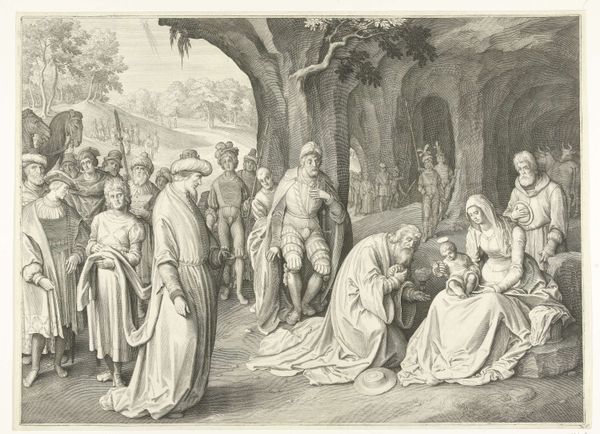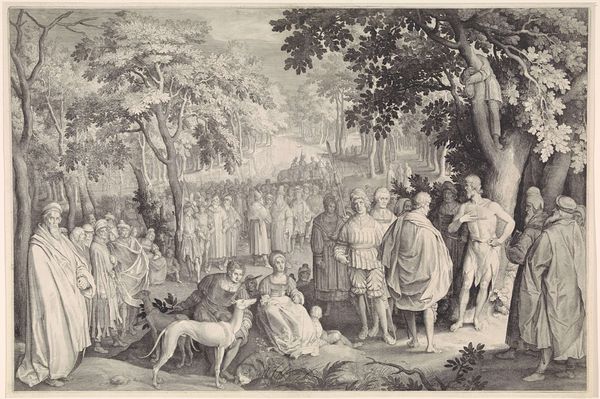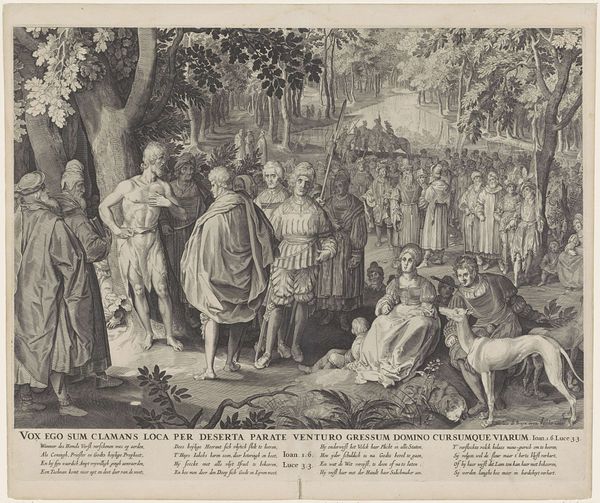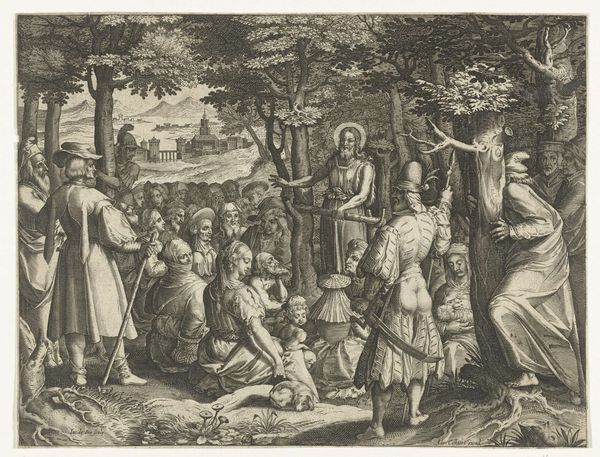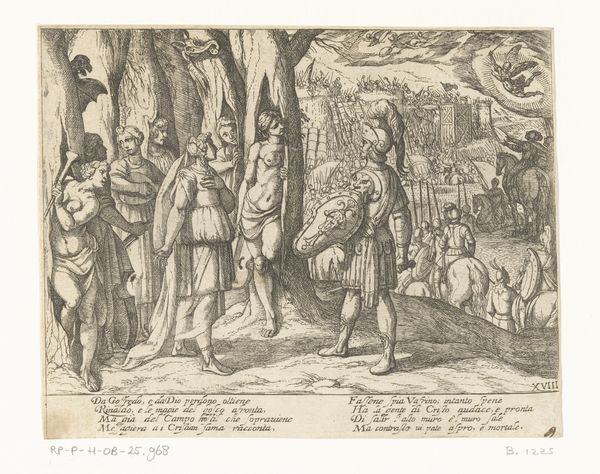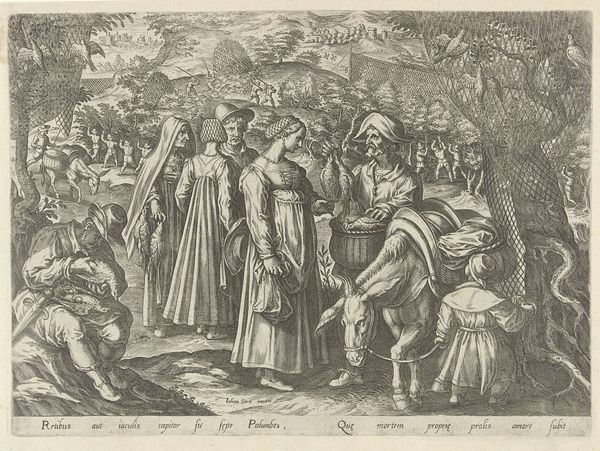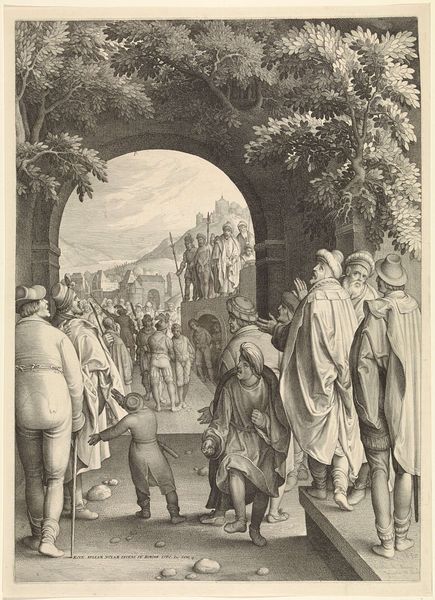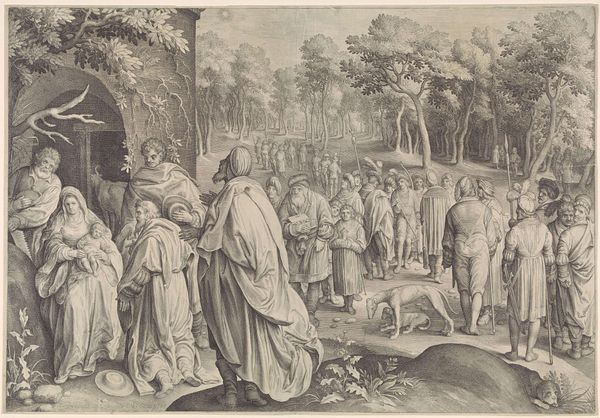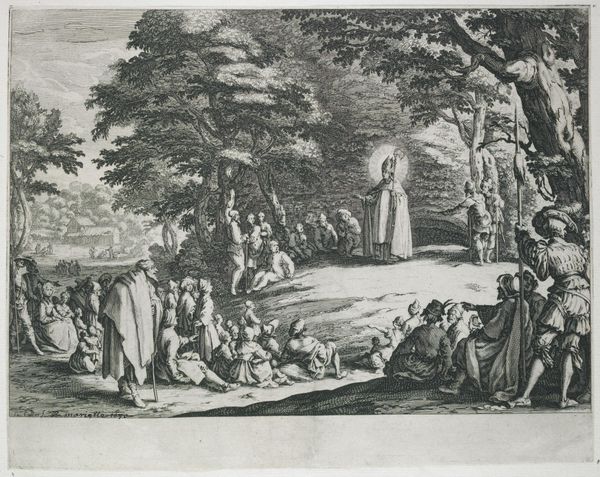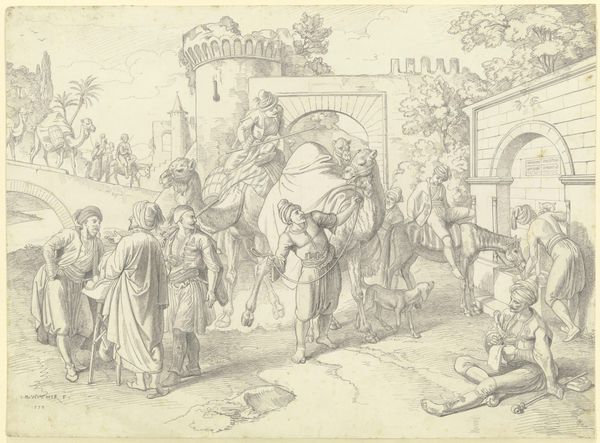
print, engraving
#
narrative-art
#
baroque
# print
#
old engraving style
#
landscape
#
figuration
#
line
#
history-painting
#
engraving
Dimensions: height 170 mm, width 246 mm
Copyright: Rijks Museum: Open Domain
Editor: This is Nicolaes de Bruyn’s 1629 engraving, "Triumph of Joseph in the Chariot of Pharaoh," housed in the Rijksmuseum. I’m struck by how much detail he manages to get into a print! It almost feels cinematic, like a grand historical tableau. What stands out to you when you look at this piece? Curator: Well, first, the visual storytelling itself. De Bruyn’s print speaks to a broader cultural interest in biblical narratives during the 17th century, but also the role of art in constructing these national, sometimes even religious, identities. What does this triumphant imagery communicate to its contemporary audience, considering the political and religious turmoil of the time? Editor: So it's not just about the Bible story itself? More like using the story for a political statement? Curator: Precisely. Think about the Eighty Years’ War. The Dutch Republic was fighting for independence, casting themselves, at times, as the 'new Israel'. How might a scene of Joseph's triumph in Egypt, his rise to power from enslavement, resonate with a society struggling for its own liberation? Do you see visual cues that amplify this sentiment? Editor: I notice the crowd, especially the soldiers on the right. They seem very aware of their position, their gaze and presence adding to the authority of the image. But it makes me think about the people on the left as they follow the main chariot with Pharaoh...are they meant to be perceived differently, not fully empowered in some way? Curator: Interesting question. Consider the function of prints during this time. They were easily reproduced, disseminated widely, and served a powerful propaganda purpose. The artist isn't simply illustrating a scene, but directing our gaze, shaping our understanding. Who gets highlighted, how, and why? All questions that give the key of the artwork to understand more than its surface! Editor: That makes a lot of sense. It’s like De Bruyn is staging this triumph not just for Pharaoh, but for a contemporary audience, shaping their views of power and their place in that story. Curator: Exactly! Thinking about the print as a carefully constructed visual argument really opens up the potential readings. A historical narrative transformed into political currency. Editor: This was incredibly insightful; I will never look at prints the same way again. Thank you for sharing this vision of power as well!
Comments
No comments
Be the first to comment and join the conversation on the ultimate creative platform.

